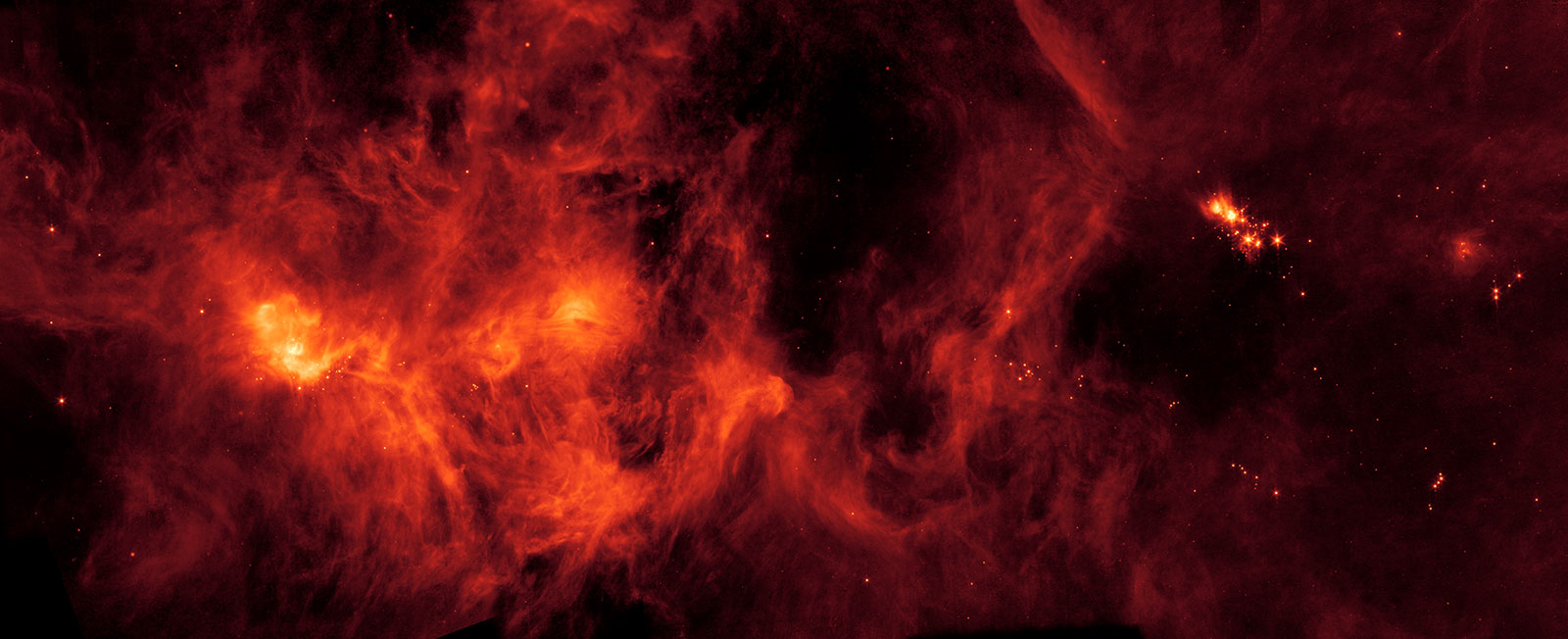
NASA’s Spitzer Space Telescope has captured this beautiful image of the Perseus Molecular Cloud by observing infrared radiation which makes the cloud glow. The cloud is over 500 light-years across and is located relatively nearby to Earth, at around 1000 light-years away. In total, the cloud has a mass equivalent to 10,000 times that of our sun.
The Spitzer Space Telescope is an infrared telescope that has captured a number of stunning space images over its 16-year career. This particular image was captured using an instrument on Spitzer called the Multiband Imaging Photometer (MIPS), which is an imaging camera which operates in three far-infrared wavelengths of 24, 70, and 160 microns.
By looking in infrared wavelengths, Spitzer is able to peer through clouds of dust which would be opaque to visible light telescopes. Clouds like the Perseus Molecular Cloud contain large amounts of dust which do not emit visible light, but which are illuminated in the infrared wavelength by clusters of stars.
Molecular clouds are regions of space with significant amounts of dust and gas, primarily hydrogen molecules. Their density means that new molecular hydrogen can form. Within molecular clouds are regions with a higher density of dust and gas, called clumps. These clumps can eventually coalesce to form stars. Hence why molecular clouds can also be called stellar nurseries.
The Perseus Molecular Cloud contains an oddity in terms of star formation, however. Within the cloud, near to the NGC 1333 nebula, is a cluster of stars that includes new-born stars, adolescent stars, and mature stars. This is unusual as stars generally form in tight clusters and spread away from each other as they age. But in this region, astronomers observe an unexpected mix of star ages.
“This region is telling astronomers that there’s something we don’t understand about star formation,” Luisa Rebull, an astrophysicist at NASA’s Infrared Science Archive at Caltech-IPAC who has studied this region, said in a statement. It is this puzzle that makes the area such an intriguing target for research: “It’s one of my favorite regions to study,” she added.



